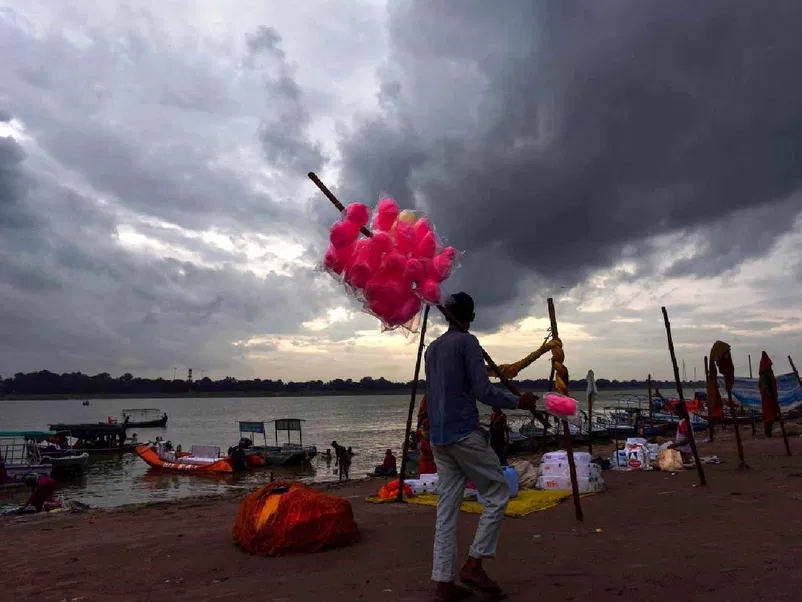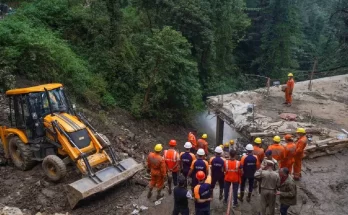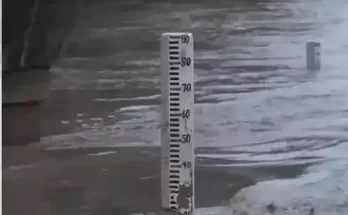Experts warn of negative impact on Himalayan water systems; Rest of India to get normal rains.

El Nino conditions are a good predictor of Indian monsoon. (Photo credit: PTI)
New Delhi: Close to 50% of the region covering Himachal Pradesh and Uttarakhand is likely to receive ‘below normal’ rainfall this monsoon. This, even as the India Meteorological Department (IMD) on Tuesday forecast ‘normal’ rainfall during the upcoming south-west monsoon season over the country.
The met department has said its prediction for ‘normal’ showers comes despite El Nino conditions which will prevail this year. According to the IMD, India will receive 83.5 cm rainfall, or 96% (with an error margin of 5 per cent) of the long-period average (LPA). The LPA is taken as 87 cm, based on seasonal rainfall for the period between 1971 and 2020.
While the forecast bodes well for the country as a whole, projections show that close to half the region covered by Uttarakhand and Himachal Pradesh will receive ‘below normal’ rainfall in the monsoon months from June to September. Neighbouring Union Territories of Jammu & Kashmir and Ladakh, and the states of Sikkim and Arunachal Pradesh, are likely to receive ‘normal’ rainfall, the data shows.
As per the IMD’s frame of reference, rainfall that is less than 90% of the long-period average (LPA) is considered ‘deficient’, between 90% and 95% ‘below normal’, between 105% and 110% ‘above normal’. LPA that’s over 110% is considered ‘excess’ precipitation.
“Almost 50% of Uttarakhand and Himachal Pradesh are showing ‘below normal’ rainfall. (But) This is our first forecast and the picture would be clearer when the detailed, month-wise forecast is issued at the end of May,” IMD director general, Dr Mrutyunjay Mohapatra told News9 Plus.
Expanding on the reason why J&K shows ‘normal’ rainfall while its neighbours don’t, Mohapatra said, “Rainfall in Uttarakhand and southern parts of Himachal Pradesh is due to the easterly winds while in the J&K and Ladakh, it is the westerly winds.”
Cause for concern
‘Below normal’ rainfall for hilly terrain is a likely cause of worry for the impact it will have on the region’s water system. As per a 2018 NITI Aayog report on the Himalayan Springs, “Most of northern India’s river systems originate in the Himalayan region, either through glacial melt or in the form of springs. Springs are the main source of water for millions of people in the Himalayas. Both rural and urban communities depend on springs for meeting their drinking, domestic and agricultural water needs.”
In the Himalayas, the rivers flow in deep valleys while the aquifers that feed them are located some 200-300 metres above. “The recharge may happen through a small stream and may happen through an open area, where there are no streams and water percolates into the ground. The aquifers start discharging to larger springs, and these feed water into smaller streams and rivers,” said Himanshu Kulkarni, convener of the drafting committee of the NITI Aayog report on Himalayan Springs.
“Any disturbance in the rainfall; [meaning] if there is lesser rainfall, there is lesser recharge. If there is lesser recharge, the aquifers will not saturate enough, which in turn, will lead to depletion in spring flow. That will mean depletion in base flow of the rivers,” Kulkarni explained.
In the Himalayas, the recharge happens by way of summer, monsoon and winter precipitation. But monsoon precipitation is vital and this results in the greatest amount of recharge during the three seasons, he said, adding, “In an already drying up region such as the Himalayas, you have a further anomaly of rainfall [shortage], which will lead to some very intense consequences.”
El Nino impact
El Nino, a Spanish term, indicates a phenomenon where Pacific Ocean warming occurs near South America and the condition has a negative impact on India’s South-West monsoon. Mohapatra had announced during Tuesday’s press conference that “El Nino impact will be seen in the second half of the monsoon in India”.
However, not all El Nino years result in poor rains during the monsoon season. IMD data shows that between 1951 and 2022, there have been 15 El Nino years of which six registered ‘normal’ to ‘above normal’ rainfall.
(This story first appeared on news9live.com on Apr 13, 2023 and can be read here.)



